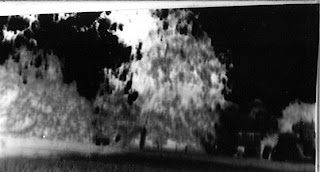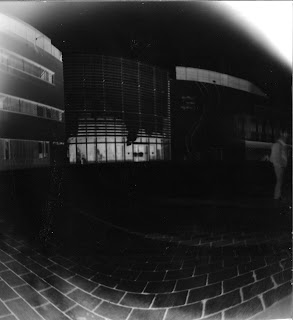The process in which a picture is taken through a camera lens is a complex process. Light patterns reflect from objects, these light patterns activate a sensitive chemical or an electronic sensor during a timed exposure. This is carried out through the photographic lens. This is how a picture is taken, the photograph (picture) is then stored inside the camera.
A camera is a device that stores images. The camera obscurer was the first camera creation, it is also known as ‘dark chamber’. The earliest mechanism of projecting images, an entire room functioned as a real time camera using natural light exposure to capture. Light always travels in a straight line, therefore when entering the lens the picture is upside down.
The shutters main function is to allow light to pass for a determined period of time , for the purpose of exposing photographic film or a light. It uses a sensitive electronic sensor of light to capture a permanent image of a scene.
The aperture is the hole with the lens. The light that travels in is measured in f-stops. The aperture ring opens to let light through.
The lens captures the light to send a focus on the film or detector.
The size of the aperture and the brightness of light entering the lens controls the amount of light that enters. This is the exposure control. The shutter controls the amount of time that light hits the recording surface for. Larger aperture and faster shutter speed does this, and a smaller aperture and a slower shutter speed will do the opposite.
The depth of field is the foreground and background, and which is in focus. The depth of field can be flipped, changing which ground is in focus.
There are many different genre’s of photography. A genre is like a category, type, or in the case could be described as a ‘theme’.
· Arial photography is a type of photography that is taken from high up, from a birds eye view.
· Black and white photography speaks for itself, it is a type of photography that is taken with no colour, in grayscale or ‘black and white’.
· Commercial photography is advertisement, a photograph that is selling something.
· Documentary photography is a photograph that is documenting something, could be the life of something or someone.
· Fashion photography is photography showing fashion clothing.
· Fine art photography is photographs taken of some form of fine art, this could be natural wild life, portraits.
· Forensic photography is photography used for evidence, mainly used by police.
· Glamour photography is photography taken of women being portrayed in a sexual way.
· High speed photography, this is when photographs are taken of something moving at a very fast speed. But focused on the image so that the blur is the background not the focused image.
· Illustration photography is photography of something illustrating a story.
· Landscape photography is photography of a horizon line.
· Nature photography is photography of wildlife, or anything natural.
· Paparazzi photography is photography taken by paparazzi, usually of celebrities ‘surprised images’
· Photo journalism is photography that presents news material for broadcast using photography.
· Portrait photography is photographed persons/objects in a positioned or posed manor.
· Still life photography is photographed images of random objects positioned for photograph.
· Underwater photography, is photographs taken underwater.
· Wedding photography is posed and positioned photography specifically for weddings/proms.
















